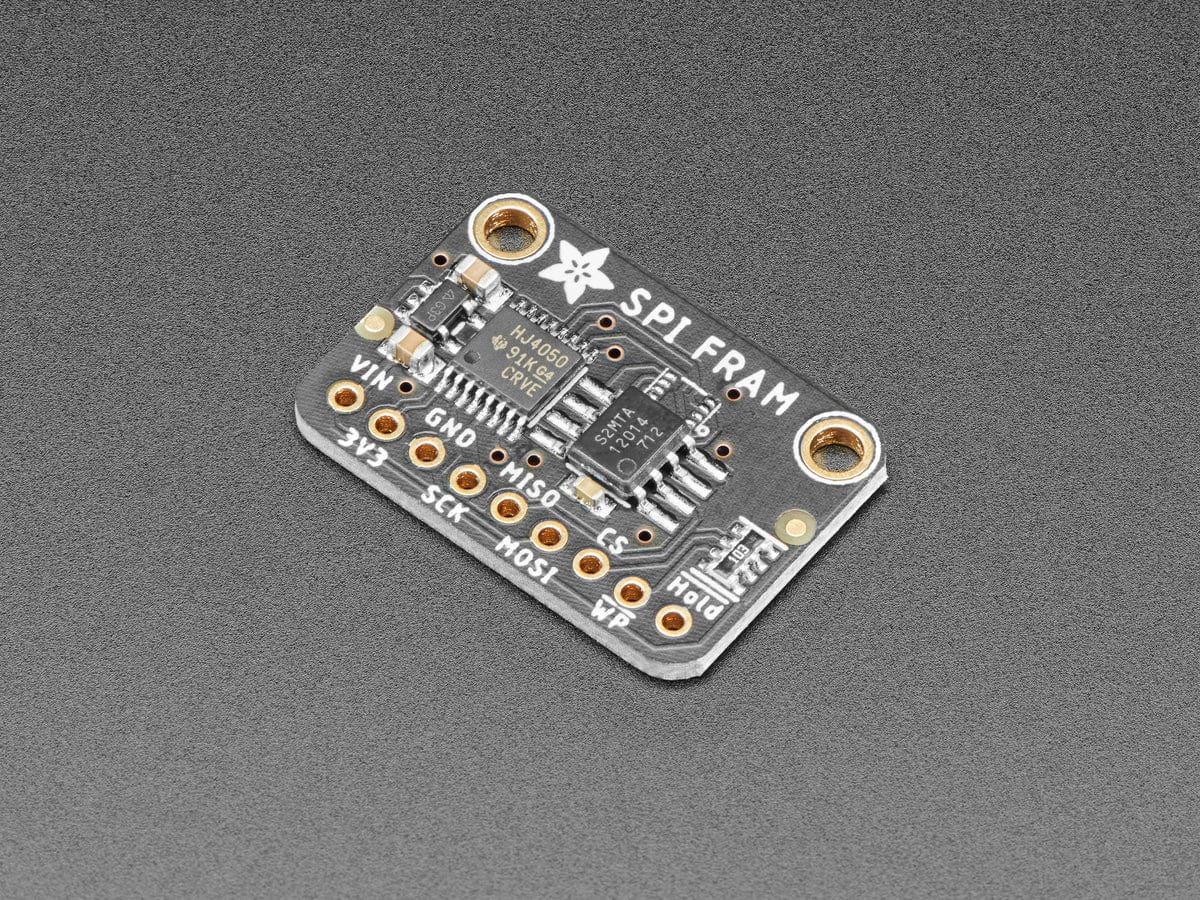
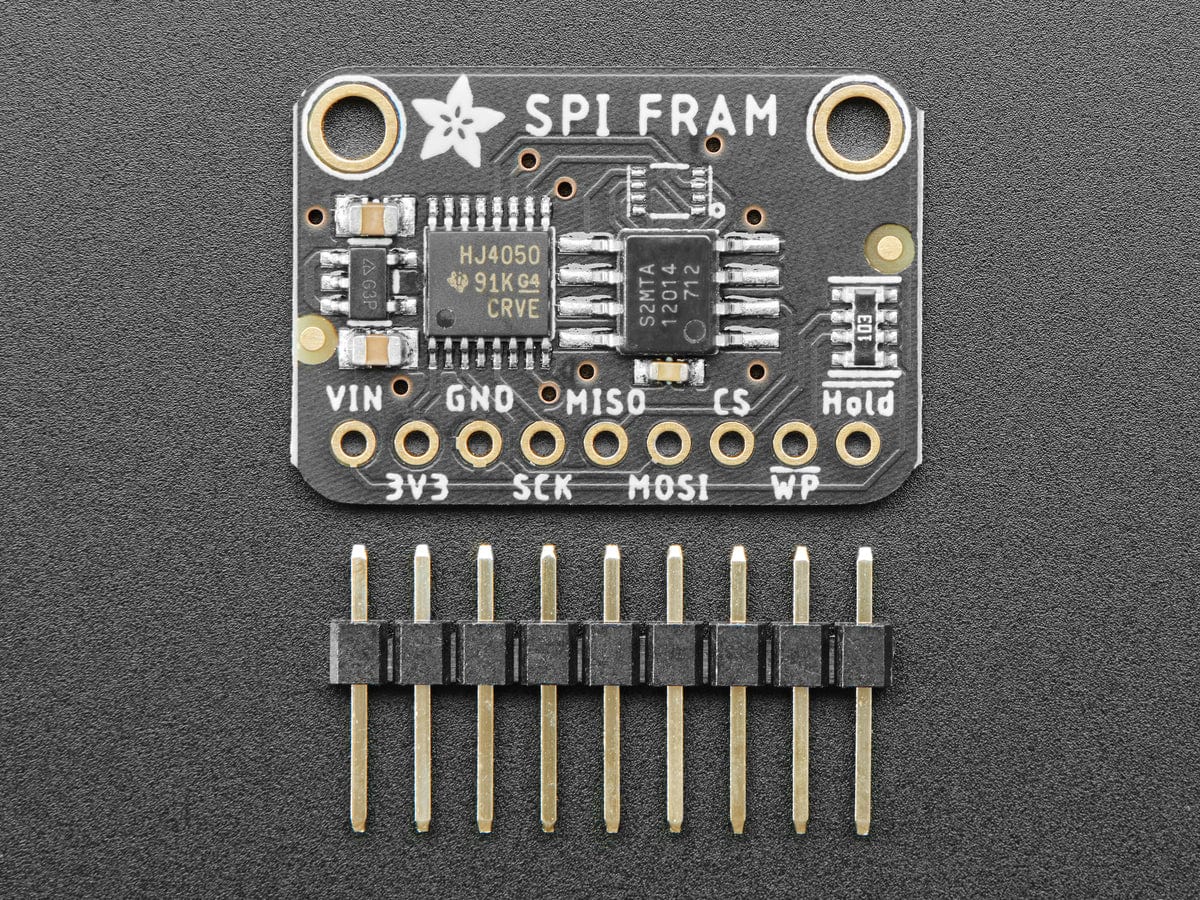
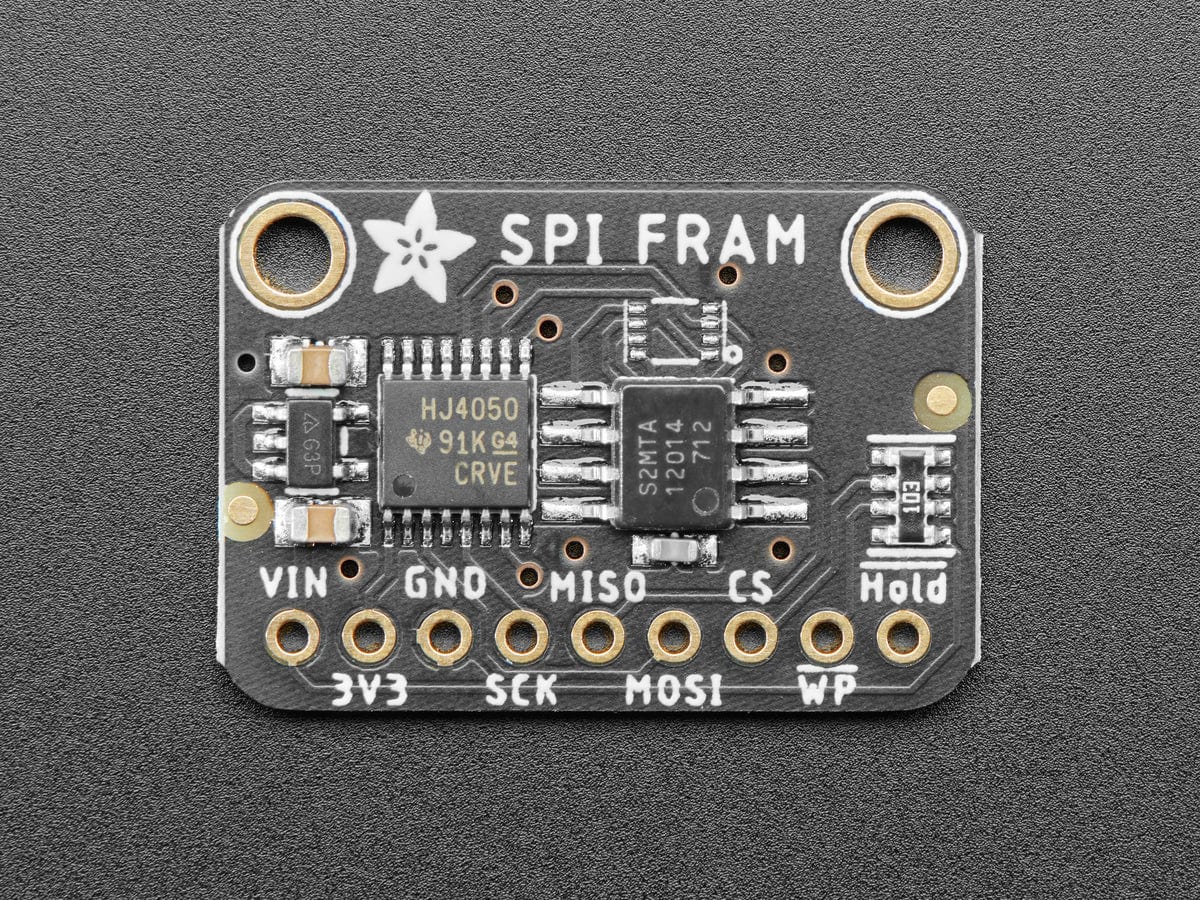
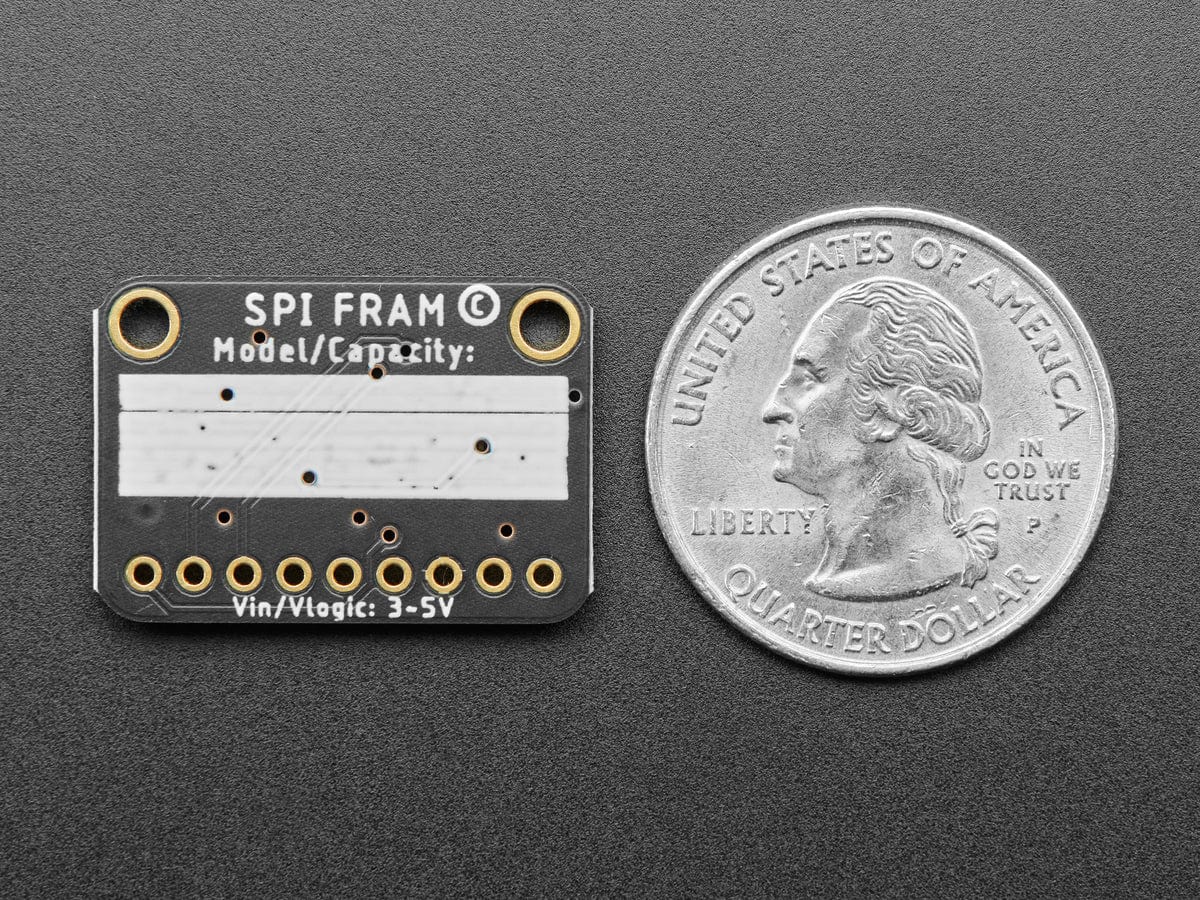
Login / Signup
Cart
Your cart is empty
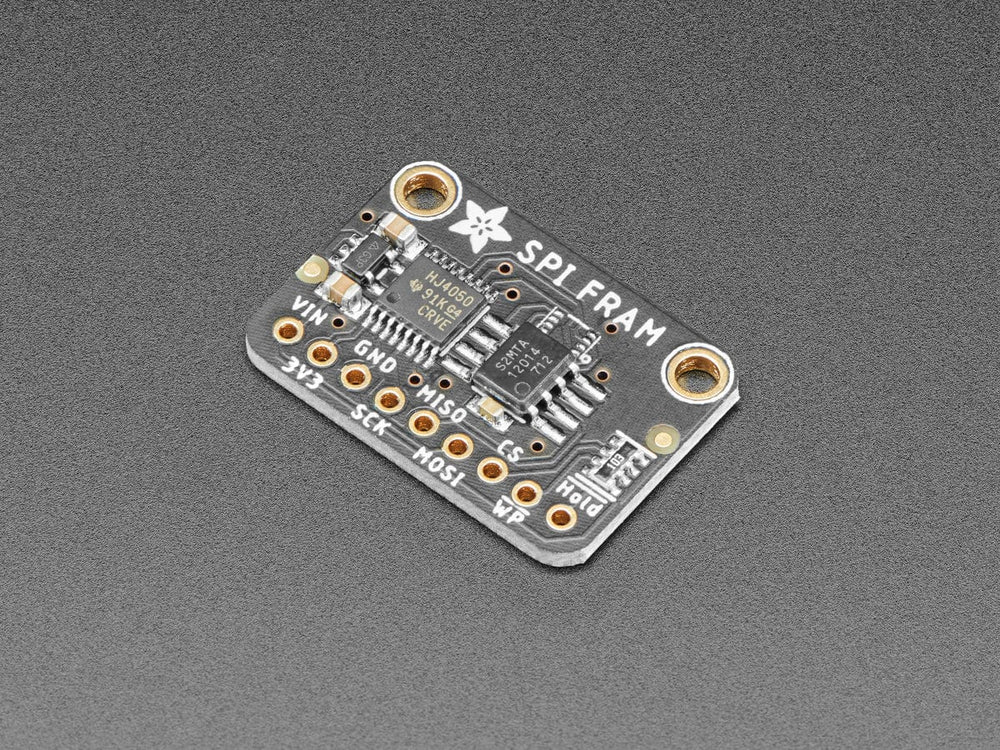
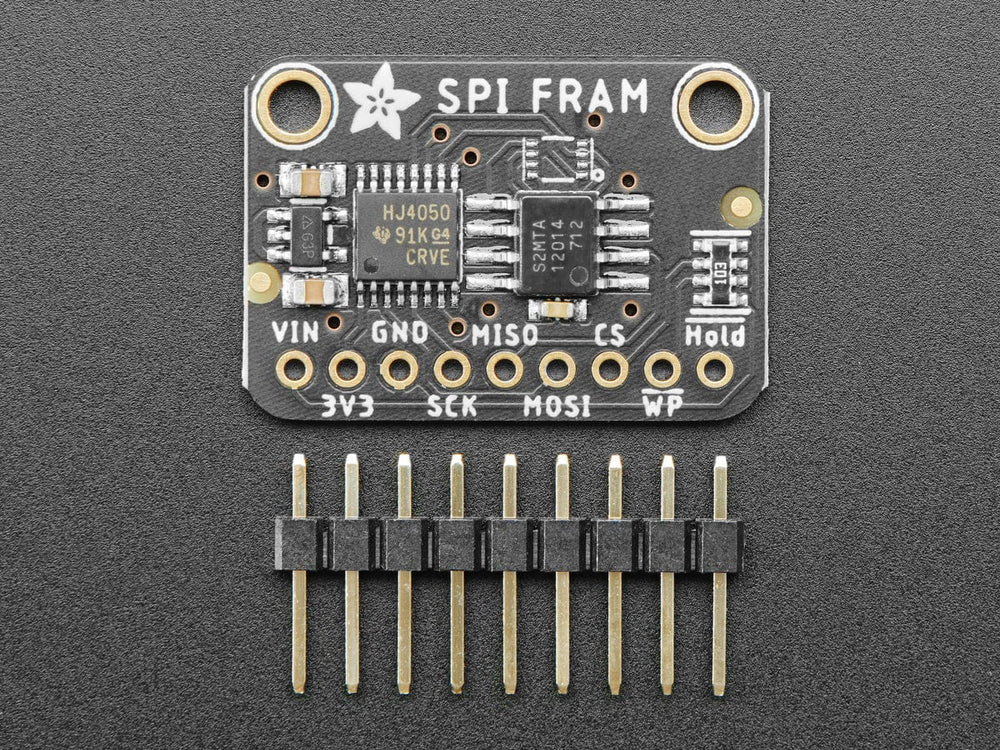
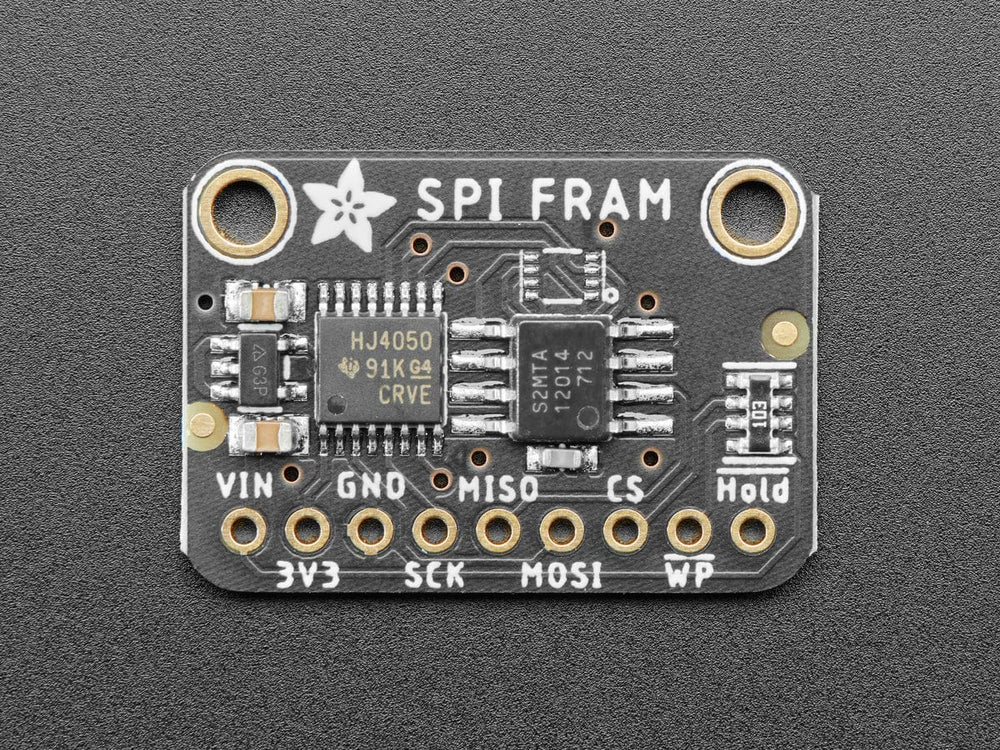
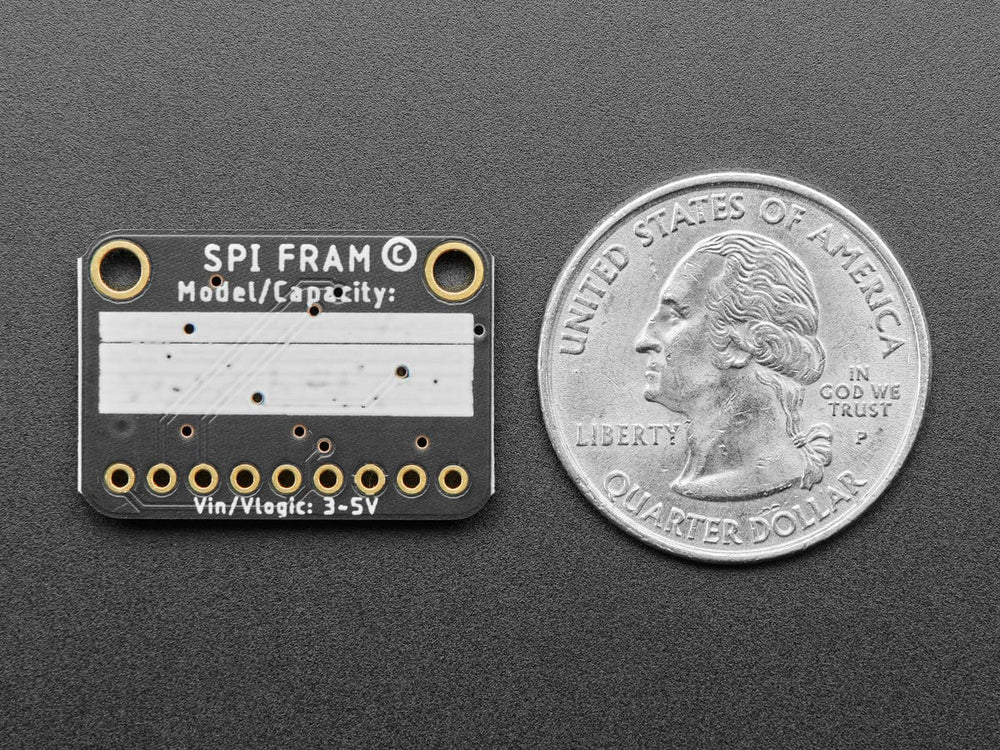
FRAM, or Ferroelectric Ram, is the coolest new data storage method that all the fashion magazines are talking about. Oh wait, no that's quilted handbags. But FRAM is pretty damn cool too! It's similar to Dynamic random-access memory, only with a ferroelectric layer instead of a dielectric layer. This gives it stable handling (the bytes you write are non-volatile) with dynamic responsiveness (you can write them very fast!)
Now, with our SPI FRAM breakout board you can add some FRAM storage to your next DIY project. FRAM allows for a lower power usage and a faster write performance. It's excellent for low-power or inconsistent-power datalogging or data buffering where you want to stream data fast while also keeping the data when there's no power. Unlike Flash or EEPROM there's no pages to worry about. Each byte can be read/written 10,000,000,000,000 times so you don't have to worry too much about wear leveling.
This particular FRAM chip has 2 Megabits (256 KBytes) of storage, interfaces using SPI, and can run at up to 40 MHz clock rates. Each byte can be read and written instantaneously (like SRAM) but will keep the memory for 95 years at room temperature.
We put this handy ferro-electric marvel onto a breakout board with 3.3V logic level shifting and regulator so that you can use this chip with either 3V or 5V power and logic. It comes in a breadboard-friendly breakout and bit of standard 0.1" header.
Looking for something with more byte? Check out the 4 MBit / 512 KBytes breakout. Or, on the other hand, if you need a smaller breakout we have the 64Kbit / 8KByte SPI FRAM breakout board. Additionally, we also have an I²C FRAM breakout board, larger in size but slower (1MHz max I²C clock rate).






